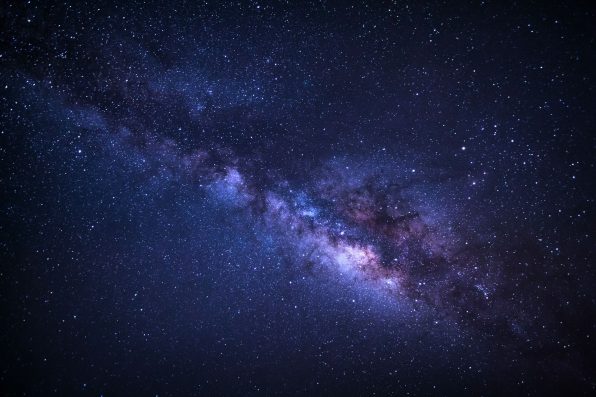New Research Suggests Dark Matter Is Linked To Antimatter, A Connection That May Lead To A Breakthrough In Our Understanding Of The Universe

For years, astronomers and physicists have been on a mission to solve one of the universe’s greatest mysteries: the nature of dark matter.
The elusive substance makes up over 85 percent of the matter in our universe, but it does not produce any light or energy, rendering it to be practically invisible. Since scientists can’t see dark matter, it is extremely difficult to detect.
However, a recent study has unexpectedly linked dark matter to antimatter, indicating that dark matter could be the source of rare antihelium nuclei detected in cosmic rays.
These particles are the antimatter counterparts of helium nuclei. Unusually high numbers of them have been observed by the Alpha Magnetic Spectrometer (AMS-02) on the International Space Station (ISS).
“WIMPs are particles that have been theorized but never observed, and they could be the ideal candidate for dark matter,” said Pedro De La Torre Luque from the Institute of Theoretical Physics in Madrid, Spain.
“These particles would interact with ordinary matter and other particles only through gravity and the weak interaction force, one of the four fundamental forces that operate only at very close distances.”
De La Torre Luque and colleagues utilized advanced computer simulations to model how dark matter particles, particularly Weakly Interacting Massive Particles (WIMPs), might generate rare antimatter particles like antihelium through annihilation events.
Their results suggest that typical astrophysical processes are unable to fully explain the presence of antihelium, but certain types of dark matter may produce detectable quantities of it.
Furthermore, dark matter annihilation could account for the observed antihelium-3 nuclei but not the even rarer antihelium-4 nuclei. Therefore, it is possible that more exotic and complex processes or particles are involved.

sripfoto – stock.adobe.com – illustrative purposes only
“Even in the most optimistic models, WIMPs could only explain the amount of antihelium-3 detected, but antihelium-4,” said De La Torre Luque. So, theoretical models may need to be expanded to include currently undiscovered particles.
Overall, these findings could open up new ways for scientists to investigate dark matter. They might even have the potential to map its distribution all across the universe. The study has also brought WIMPs back to the forefront of the search for dark matter.
In the past, WIMPs were strongly thought to be the most viable candidates for dark matter, but over the years, unsuccessful searches have ruled out many of them. But now, the recent antihelium observations have made WIMPs a promising candidate once again.
The scientific community is buzzing with excitement as they wait for more observations and experiments to be conducted.
The newfound connection between dark matter and antimatter is a thrilling development and could lead to a breakthrough in our understanding of the universe.
The details of the study were published in the Journal of Cosmology and Astroparticle Physics.
Sign up for Chip Chick’s newsletter and get stories like this delivered to your inbox.
More About:News